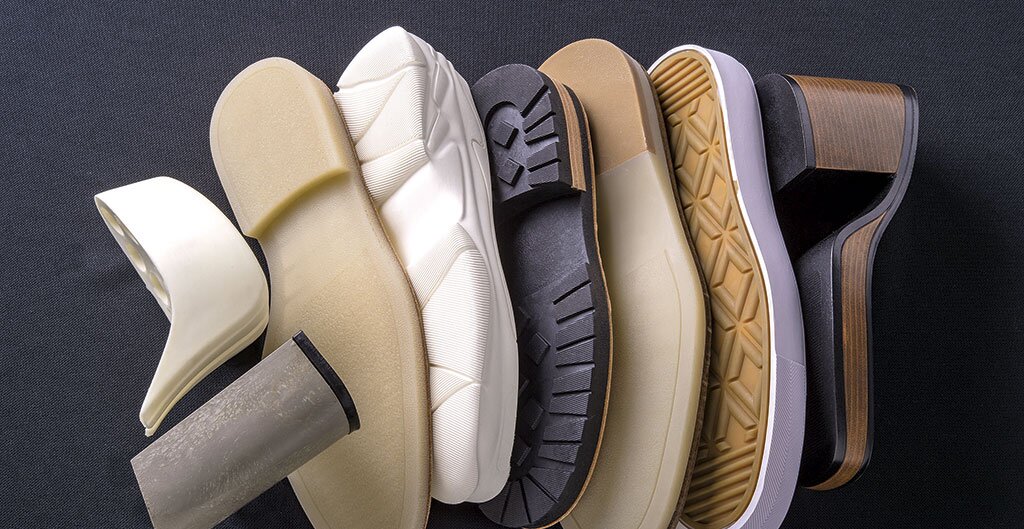


1. TR - Thermoplastic rubber
Non-slip material, quite flexible and easily deformable by heat. It tears with the attack of solvents such as acetone and ethyl acetate. The TR (thermoplastic rubber) compounds have as a base a copolymer formed by styrene and butadiene blocks (SBS) that gives the characteristics of vulcanized rubber with the ease of thermoplastic transformation. They are easy materials to process, as well as PVC, and they behave like a SBR vulcanized at room temperature.
They can be subdivided into conventional, gummed and super-gummed.
IDENTIFICATION: when burned, its flame is yellow and emanates a sweet smell of rubber.
2. PU – Polyurethanes
Material similar to PVC, non-slip and opaque. It can offer a wide variety of densities and hardnesses that vary according to its formulation and property modifiers.
IDENTIFICATION: softens and breaks under the tetrahydrofuran action, an organic compound, with an ether-like odor.
3. PVC - Polyvinyl Chloride
Polyvinyl Acetate is a material that glides and has shine. Depending on its formulation and additives it can be rigid or flexible, providing resistance to most chemical reagents. It has good thermal, electrical and acoustic insulation, as well as high durability and resistance.
IDENTIFICATION: softens and breaks under the action of tetrahydrofuran.
4. EXPANDED EVA - Ethylene vinyl acetate
Lightweight material, with a flexible sponge appearance and with low abrasion resistance. Accepts pigmentation of various colors.
IDENTIFICATION: when exposed to the flame, it releases a smell similar to the burned paraffin (candle). Continues burning even when removed from the flame.
5. EVA INJECTED - Ethylene vinyl acetate
Lightweight material that accepts pigmentation of various colors. It is similar to TR, but does not have rubber characteristics.
IDENTIFICATION: The flame of this material emanates acidic smell similar to vinegar.
6. TPU - Thermoplastic PolyurethaneThe proper application of the soles in the footwear responds to previous compatibility tests between the different intervening materials.
7. SBR - Vulcanized rubberSource: Technical Manual of ASSINTECAL -Brazilian Association of Companies of Components for Leather, Footwear and Manufactures-, elaborated with associated companies and the support of APEX -Exports Promotion Agency-.
